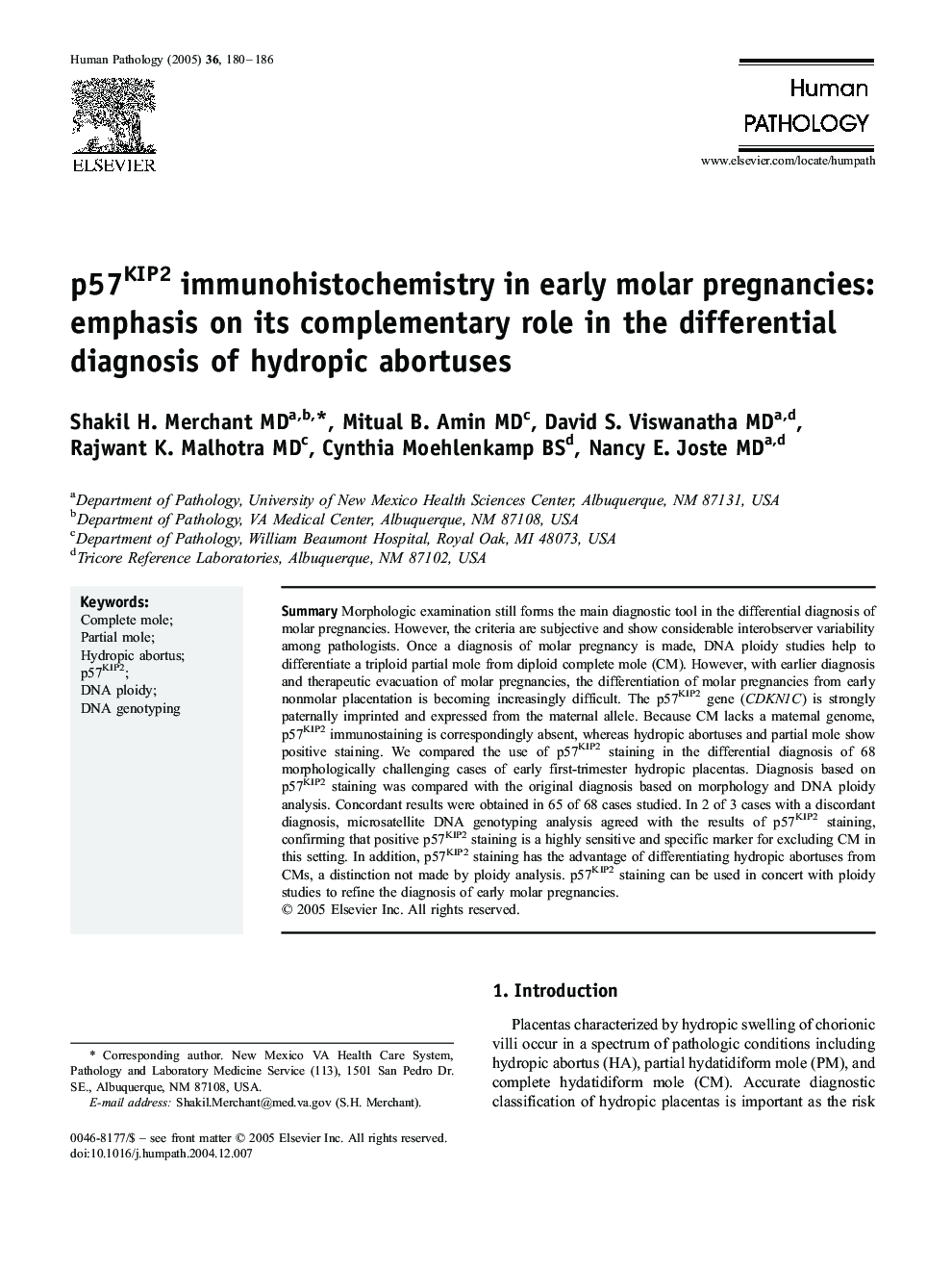| Article ID | Journal | Published Year | Pages | File Type |
|---|---|---|---|---|
| 9365438 | Human Pathology | 2005 | 7 Pages |
Abstract
Morphologic examination still forms the main diagnostic tool in the differential diagnosis of molar pregnancies. However, the criteria are subjective and show considerable interobserver variability among pathologists. Once a diagnosis of molar pregnancy is made, DNA ploidy studies help to differentiate a triploid partial mole from diploid complete mole (CM). However, with earlier diagnosis and therapeutic evacuation of molar pregnancies, the differentiation of molar pregnancies from early nonmolar placentation is becoming increasingly difficult. The p57KIP2 gene (CDKN1C) is strongly paternally imprinted and expressed from the maternal allele. Because CM lacks a maternal genome, p57KIP2 immunostaining is correspondingly absent, whereas hydropic abortuses and partial mole show positive staining. We compared the use of p57KIP2 staining in the differential diagnosis of 68 morphologically challenging cases of early first-trimester hydropic placentas. Diagnosis based on p57KIP2 staining was compared with the original diagnosis based on morphology and DNA ploidy analysis. Concordant results were obtained in 65 of 68 cases studied. In 2 of 3 cases with a discordant diagnosis, microsatellite DNA genotyping analysis agreed with the results of p57KIP2 staining, confirming that positive p57KIP2 staining is a highly sensitive and specific marker for excluding CM in this setting. In addition, p57KIP2 staining has the advantage of differentiating hydropic abortuses from CMs, a distinction not made by ploidy analysis. p57KIP2 staining can be used in concert with ploidy studies to refine the diagnosis of early molar pregnancies.
Related Topics
Health Sciences
Medicine and Dentistry
Pathology and Medical Technology
Authors
Shakil H. MD, Mitual B. MD, David S. MD, Rajwant K. MD, Cynthia BS, Nancy E. MD,
